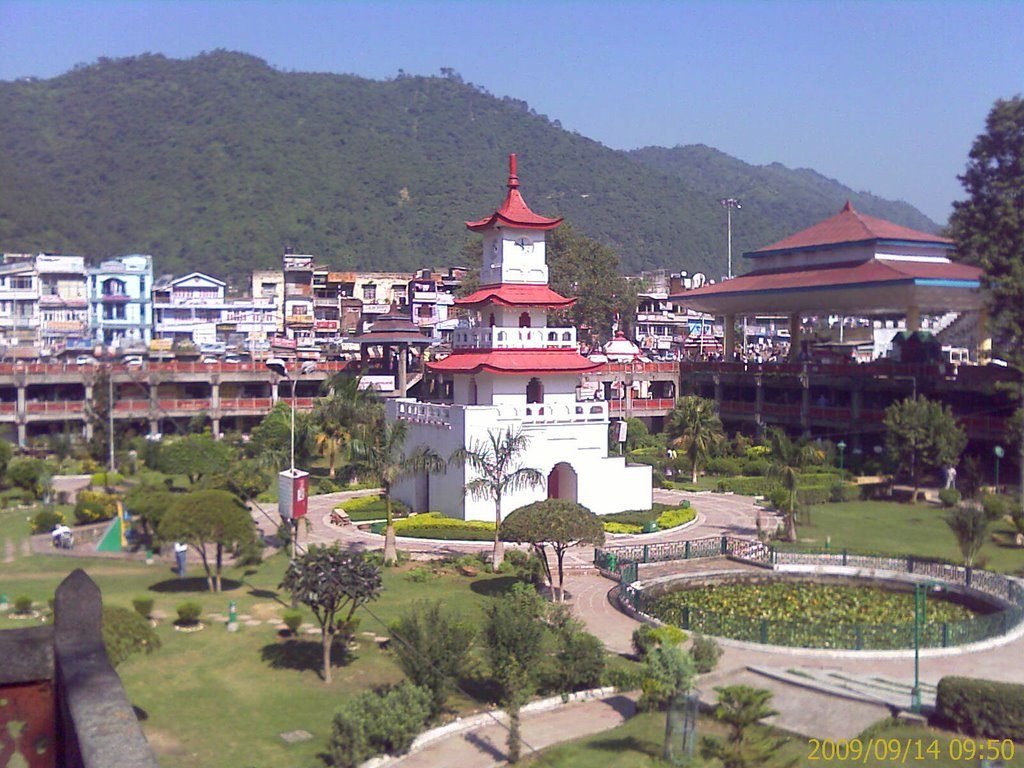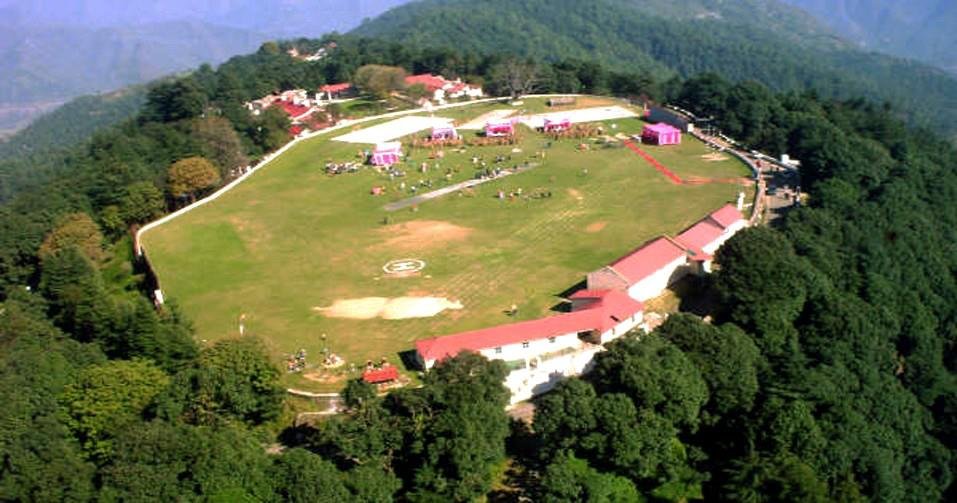Sirmaur is the most south-eastern district of Himachal Pradesh, India. It is largely mountainous and rural, with 90% of its population living in villages. It includes the towns of Nahan (it’s capital), as well as the Shivalik Fossil Park at Suketi, where fossils of over 85 million years old have been found.
 There are six tehsils in this district, namely Nahan, Renuka, Shillai, Rajgarh, Pachhad, and Paonta Sahib.
There are six tehsils in this district, namely Nahan, Renuka, Shillai, Rajgarh, Pachhad, and Paonta Sahib.
Agriculture is the backbone of the economy here. Farmers of Sirmaur produce potato and ginger. Sirmour is also known for its good quality of peach that comes from the Rajgarh region which is also called the Peach Bowl. Sirmour is known for growing tons of fruits every year. Dhaula Kuan near Paonta Sahib is known for its Govt operated fruit research center. Sirmour district is significantly capable of growing both Apple and Mangos on its land. Tomato is also becoming a choice for farmers these days. Village Lana-cheta is known for its fertile land and farmers here grow grains as a first option.
The Giri River divides the district into two almost equal parts: Giripar and Giriwar.
Sirmaur Tourist Places
Habben Vally
Habben valley is very famous for tourism. Famous Temple of Shirgul Devta, Palu Devta, Tokro Tibba Kali Maa & Smalltown Haabbn which is completely out of City life. Where one can enjoy & experience the real village life in and surrounding. There are two famous Temple Tokroo Tibba Kali Maa and Palu Devta. Haabbi 1500 a well-known Rajoot Cast belongs to these two Devtas. Lord Shirgul Temple one of the famous temples in north India Lord Shirgul is worshiped in Sirmaur, Solan, Shimla Uttranchal, Delhi and many other places. Thick Devdar forests are the crown of the area which attracts many tourists from all over India. There is a trek that also leads to the Churdhar Holy place of Lord Shiva.
Churdhar
The Chur Peak in district Sirmaur rises to an elevation of 3647 m above sea level. The enchanting mountain is an important religious place for all Sirmouries. It is one of the Shivalik ranges at a height of 11965 feet (it is the highest peak in southern Himachal Pradesh). Churdhar, also known as Churchandni (Bangle of Snow), is blessed with some of the most spectacular and beautiful landscapes in this region. The view from the summit embraces a vast panorama of lowland tracts towards the south and snow-capped ranges, including the peaks of Badrinath and Kedarnath in the Garhwal region, towards the north. It is believed that this is the very place where Hanuman discovered the life-restoring Sanjivini booti, which revived Lakshmana, Lord Rama’s younger brother. Ruins of an ancient town have been discovered at the nearby Dundi Devi.
A wealth of herbs and beautiful alpine flora cover these Himalayan slopes. Walking through the wildlife sanctuary, one spots the spectacular monal, Himachal’s state bird, along with koklass and kaleej pheasants.
Trekkers tread over small glaciers on their way to the wind-blown Churdhar summit, which has moderate to heavy snowfall (average of 33 feet snow). Often the Shirgul temple gets buried under it. On a clear sunny day, you can be rewarded with a view of the Badrinath and Kedarnath shrines, Gangetic plains, the Sutlej river, and hills of Shimla and Chakrata. Atop the Churdhar summit lie the lingams of Shiva and Kali, where once goat and sheep were sacrificed. Devotees hoist flags and make offerings here.
Renuka Ji
Renuka lake is another important place of religious and tourist interest in Sirmaur. It is nearly 40 km away from Nahan and is well-linked with a motorable metalled road. This place has a famous lake. Boating in Renuka lake is the main attraction for the tourists visiting Renuka. This sacred oval-shaped lake has a circumference of 2.4 km.

This famous lake is visited by thousands of pilgrims every year on Kartika Ekadashi. The 1.6 km patch between the Giri and humming camp where villagers hailing from far off places stay for a couple of days. Nightlong festivities including Kirtans are held by various groups.
The place reaches full capacity during the days of the fair and offer a spectacular variety of activities. As one approaches the fairground he is greeted by a notice board put up by the Wild Life Wing of the Forest Department warning, “Hold Your Gun–Game Sanctuary Starts”.
To this fair, the brass idol of Parasu Rama is brought from village Jamu, his permanent abode, in a silver palki accompanied by musical instruments with great pomp and show. The deity remains in the temple for three days i.e. sudi, dashmi to dwadashi (from 10th to 12th of the bright half). The hill people pry to pujari with questions during the night when he goes into a trance and turns an oracle. He answers each and every question. These answers foretell things and, quite often, enjoin upon the questioner some offering or sacrifice to the deity of some other act as a condition precedent to the fulfillment of the favorable prophecy such as deliverance from some misery or recovery of health from some disease. On dwadashi, generally, the people offer alms after the holy dip in the Renuka lake.
Haripur Dhar
Maa Bhangayani Temple, Haripurdhar, is a very famous temple in Sirmaur.
Haripur is the name applied to a mountain called Haripur Dhar. Perched on a peak of this hill like a silent sentinel, a fort was built on this range of mountains by the rulers of erstwhile Sirmaur State. It was primarily meant to guard the state frontiers with the neighboring Jubbal State as there were constant boundary disputes between the two states and there was unusual encroachment into each other’s territory. It has fallen into disuse and the part which is still habitable is used by the Forest Department as forester’s headquarters. The fort reminds the visitor of the historical period when to hold or capture such forts used to be the chief aim of the contending hill states. Lying at a distance of about 106 km from Nahan, Haripurdhar can be approached first by a regular bus service covering 40 km up to Dadahu, wherefrom up to Andheri one can go by a jeep for about 44 km. The remaining portion of about 22 km, which is under construction for a jeepable road, can be covered on foot or on ponies. The next and easier way to approach this place is from Solan via Rajgarh. Kharotiyon, a place from where the site of the fort remains about 2 km on the high hilltop.
How to reach Sirmaur:
Access by Air: The nearest airport in Himachal is Jubbarhatti 102 km. ( from Sarhan via – Solan – Shimla – Jubbarhatti ) and 140 km. from Nahan.
Access by Rail: Nearest narrow-gauge line is Barog ( near Kalka ) 42 km.
Access by Road: Almost each and every part of the state is linked by roads. The Himachal Road Transport Corporation is running its buses covering the whole state. There is a huge network of HRTC to cater to the needs of the people.
Distances : Shimla to Sarahan 175 km., Chandigarh to Nahan 87 km. Shimla to Renuka 165 km., Delhi to Renuka 315 km.



